Three films, nine hours, give or take. The third might be an afterthought and the lesser of the three (though it has some very great moments in its own right), more a reason to catch up with Michael Corleone and the next generation of his family in later life, but the first two are authentic modern classics. Godfather 1 & 2 (from Mario Puzo‘s original book) were made when Francis Ford Coppola was bang at the top of his powers, released in 1972 and 74 with the compelling thriller The Conversation sandwiched inbetween.
What makes The Godfather such brilliant entertainment? Partly that this was the first time a director had the nerve to make movies that got so close to the nerve centre of how Mafia families operated, and indeed they could not have been made without the direct approval of the mob. Several incidents described in the text are fictionalised versions of real life incidents, not least the Johnny Fontaine (Al Martino) story about the bandleader, in which the real life Fontaine was of course Frank Sinatra (though some say Dean Martin) – and this is far from being the only example. On the Las Vegas scenes, read Dennis N Griffin’s excellent book The Battle For Las Vegas and see how many episodes sound familiar!
This was not just a dangerously fine line Coppola chose to tread, but that he lived to tell the tale and produced a movie so utterly riveting, approved by the mob AND the studio (the latter being the more demanding, apparently) is simply staggering. Goodfellas, the Sopranos and many more would simply not have been possible without the Godfather.
However, there is much, much more to it than that. The plot, the pacing, the cinematography, the script, the cast, the acting, the music – everything combines to make this unique. Starting with the script, it is packed with memorable lines, including the one everybody remembers – “I’ll make him an offer he can’t refuse.” But how about these:
- “It’s a Sicilian message. It means Luca Brasi sleeps with the fishes.”
- “Fredo, you’re my older brother, and I love you. But don’t ever take sides with anyone against the family again. Ever.”
- “Leave the gun. Take the cannoli.”
- “You sonofabitch, do you know who I am? I’m Moe Greene! I made my bones when you were going out with cheerleaders.”
- “Today I settled all Family business, so don’t tell me you’re innocent, Carlo.”
- “I don’t care how many dago guinea wop greaseball goombahs come out of the woodwork! [Tom: I’m German-Irish] Well let me tell you something, my Kraut Mick friend! I’m gonna make so much trouble for you, you won’t know what hit you!”
- “Mr. Corleone is a man who insists on hearing bad news immediately.”
- “I have a sentimental weakness for my children and I spoil them, as you can see. They talk when they should be listening.”
- “Never tell anybody outside the family what you’re thinking again.”
…and many more.
More than that, the film has so many memorable scenes you can hardly describe them all in a shortish blog: the horse head scene is the stuff of legend (Adam tells me actor John Marley did not know in advance about the horse’s head, so his reaction was genuine!), but there are so many more, such as: the murder at the tollbooth; the baptism contrasted with the murder of the heads of the other families and Moe Green – shot in the eye through his thick glasses; the restaurant scene where Sollozzo is talking to Michael in Italian, though Michael knows he will be killing his rival and police captain McLusky; and so many more – try here for a few of them. And that’s only the first film: the second film has even more brutally unforgettable scenes, if anything!
Throughout, you will be astonished that the characters remain so utterly credible in spite of what they are doing – when a threat is issued you know it is for real. More than simply they are gangsters so they kill people, you can read their thoughts – you know that business is business but you can read their motives, their tactics. You become one of them! This is so much more than just cinema, and that is precisely what good cinema does – it transports you.
For this huge credit must go to the cast. Marlon Brando, whatever his faults, is simply magnificent. His every twitch and gesture conveys meaning. His is a stupendous performance, though he is matched all the way by his family: A very young Al Pacino as Michael, growing up as the youngest member of the dynasty but destined to head the family business through the rockiest of times; James Caan slightly miscast as Santino (Sonny), but still doing an excellent job as the hot-headed elder son whose temper is ultimately his downfall; John Cazale as the dim-witted Fredo, second son; Talia Shire (Coppola’s sister) as sister Connie; Robert Duvall as consigliere and lawyer Tom Hagen; and many, many more. The cast is simply stupendous – they do an incredible job. Without them you could never believe the Corleone family held such menace.
Coppola’s pacing of the film is also masterly. For all the action scenes and violence, he keeps the movie serious, straight-faced and steady, full of quiet and reflective moments, light and shade and contrast, demonstrating that business and family is ultimately what matters most to these people. As Michael himself says in the movie: “I don’t like violence, Tom. I’m a businessman. Blood is a big expense” (though he also proves more than ruthless in dealing with enemies within and without the family, belying his reputation as the quiet college boy who was destined for life outside the family business.)
In short, the Godfather is a metaphor for American capitalism – small wonder Paramount Studios fought Coppola tooth and claw. The studio would doubtless have cut much of the screen time and focused more on the action, which would have missed the point entirely. You have to see the family and its integrity as being the central driving force, and for that you have to know the family intimately. Coppola succeeds here where many have failed. As Wikipedia puts it:
Paramount was in financial trouble at the time of production and was desperate for a “big hit” to boost business, hence the pressure Coppola faced during filming. They wanted The Godfather to appeal to a wide audience and threatened Coppola with a “violence coach” to make the film more exciting. Coppola added a few more violent scenes to keep the studio happy. The scene in which Connie smashes crockery after finding out Carlo has been cheating was added for this reason.
The other thing for which The Godfather is best known is that the sequel is not only not inferior, but arguably better than the original. Taking as read that you saw part 1, it compares and contrasts the rise to power from his Italian roots of young Vito Corleone and Michael’s struggle after Vito’s death to turn the family business legitimate, against the odds, to be his own man and to defy all those around him.
By rights it should never work, but it does – thanks to the contrast between Robert de Niro‘s young Vito and Pacino’s Michael – and two towering performances, though Pacino’s might best be described as smouldering. They are again supported by an excellent cast, supplemented by brilliant cameos by the likes of Michael V Gazzo as hoarse-voiced Frank Pentangeli and none other than famed acting coach Lee Strasberg as the evil but mesmerising Hyman Roth. But the most haunting image is the brooding Michael at the end of the second movie, having burned all his bridges. That look stays long in the memory.
For me what I love most is that no matter who often I see the Godfathers, I see something new, something I never spotted before. This surely is the mark of great cinema. Most people have seen the first two Godfathers, and tend to rate them among their favourites. I am no exception: see my all-time favourites, where I summed up the movies thus:
Francis Ford Coppola’s heavyweight saga, based on the characters in the Mario Puzo novel, spawned a new generation of gangster movies. Both the movies (and it’s very hard to separate them, so integral are they to the overall plot) are iconic in content and delivery. Character acting has rarely been so convincing, and who could forget Brando’s turn as the eponymous antihero?
I ne’er spoke a truer word.

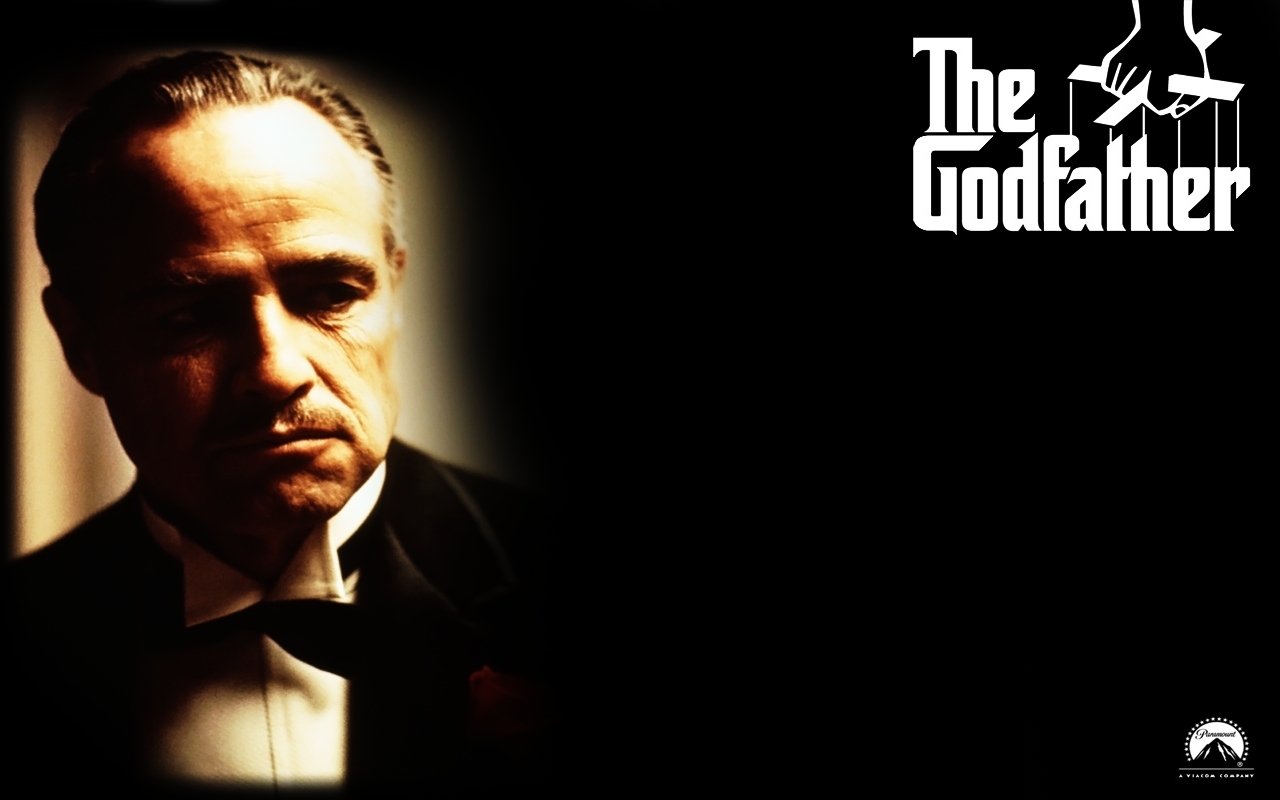

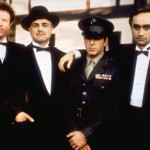


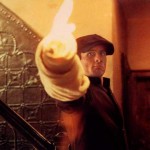
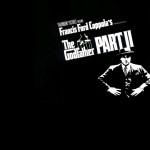
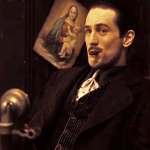
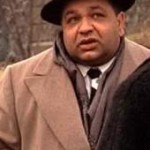
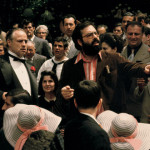

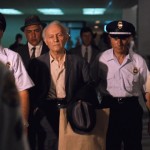


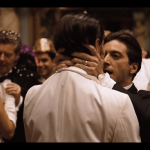
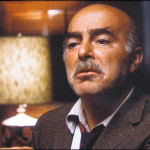
Nice review. I love the films, but I didn’t know hardly anything about the background to their creation.